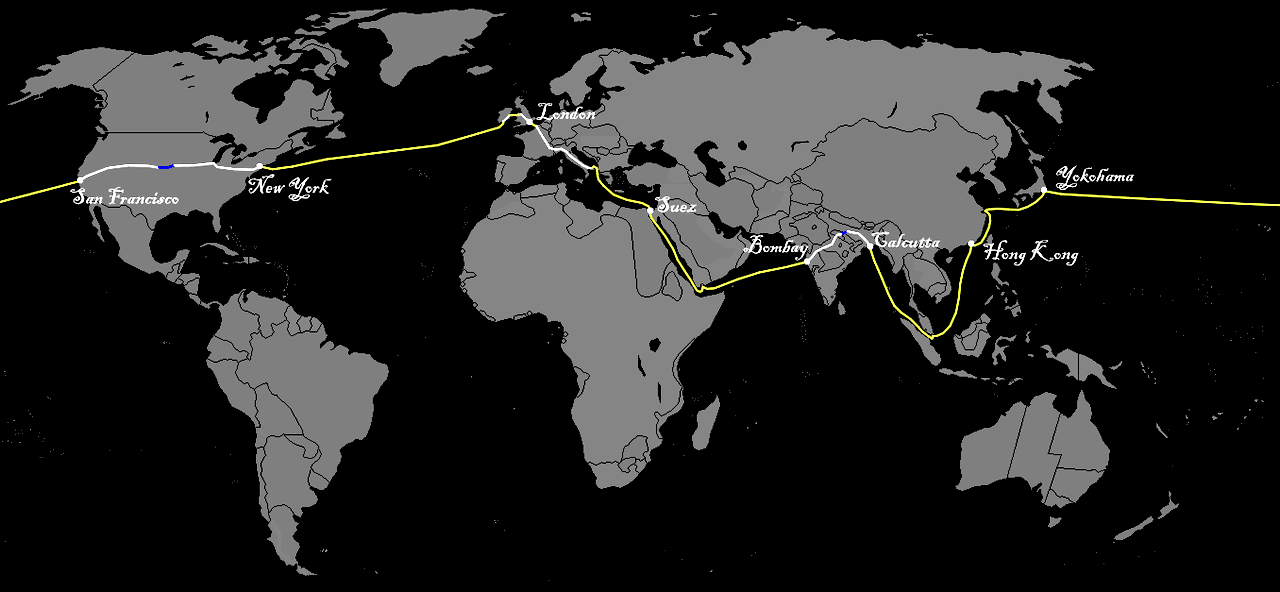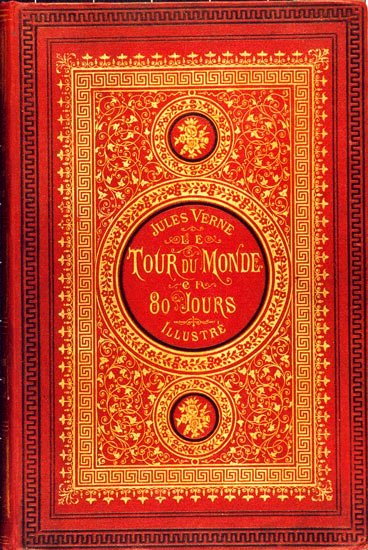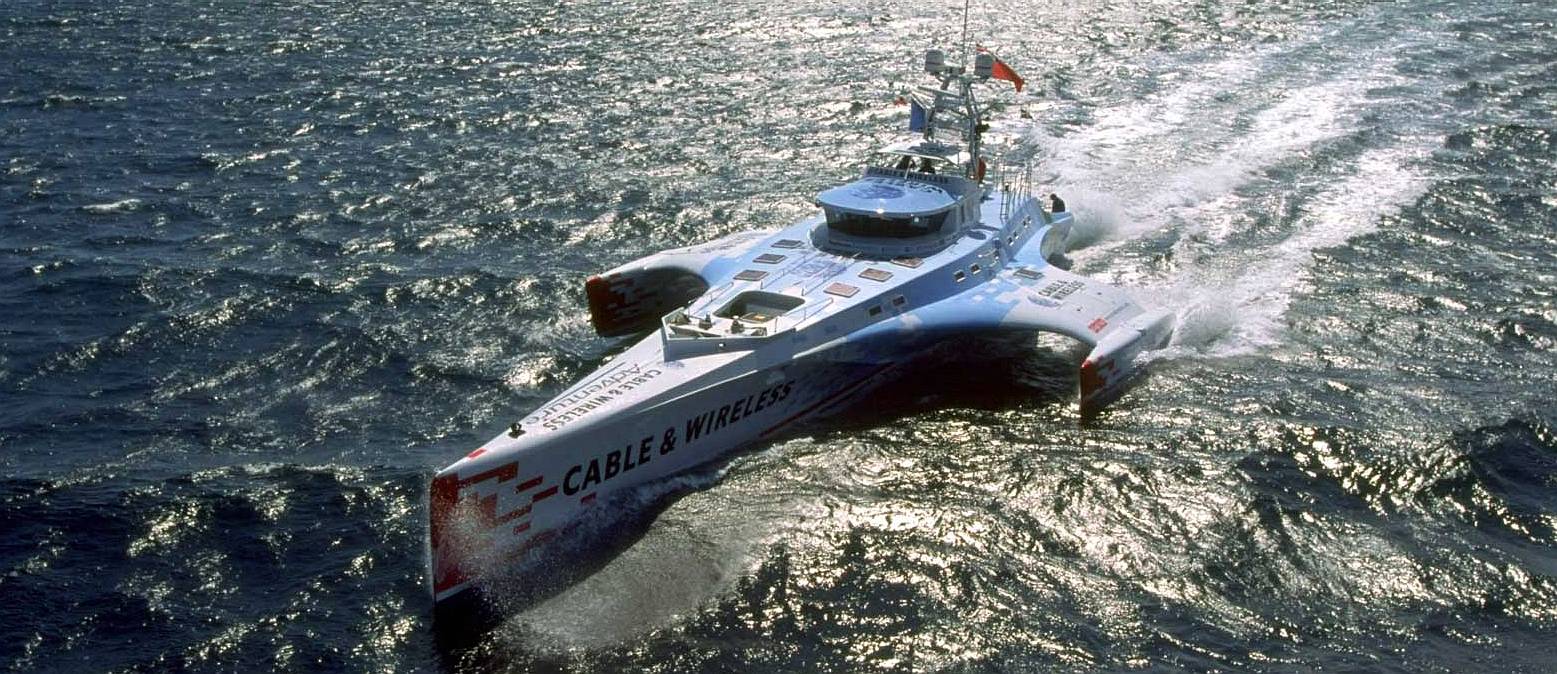|
PHILEAS
FOGG
BLUE
GROWTH - CIRCUMNAVIGATION
- CONTACTS - DONATE
- FOUNDATION -
FUNDING
- HOME - A-Z INDEX

ROUTE
MAP - This is the route that Phileas Fogg takes in
accepting the challenge to travel around the world in under 80
days.
Jules
Verne is one of our favourite authors, inspiring us with
magical tales of wonder and achievement in the world of
science fiction.
Phileas Fogg is a rich British gentleman living in solitude. Despite his wealth, Fogg lives a modest life with habits carried out with mathematical precision. Very little can be said about his social life other than that he is a member of the Reform Club. Having dismissed his former valet, James Forster, for bringing him shaving
water at 84 °F (29 °C) instead of 86 °F (30 °C), Fogg hires Frenchman Jean Passepartout as a replacement.
At the Reform Club, Fogg gets involved in an argument over an article in The Daily Telegraph stating that with the opening of a new railway section in India, it is now possible to
travel around the world in 80 days. He accepts a wager for £20,000 (£2,075,400 in 2017), half of his total fortune, from his fellow club members to complete such a journey within this time period. With Passepartout accompanying him, Fogg departs from London by train at 8:45 p.m. on 2 October; in order to win the wager, he must return to the club by this same time on 21 December, 80 days later. They take the remaining £20,000 of Fogg's fortune with them to cover expenses during the journey.
The story starts in London on Wednesday, 2 October 1872.
Fogg and Passepartout reach Suez in time. While disembarking in
Egypt, they are watched by a
Scotland Yard detective, Detective Fix, who has been dispatched from London in search of a bank robber. Since Fogg fits the vague description Scotland Yard was given of the robber, Detective Fix mistakes Fogg for the criminal. Since he cannot secure a warrant in time, Fix boards the steamer (the Mongolia) conveying the travelers to Bombay. Fix becomes acquainted with Passepartout without revealing his purpose. Fogg promises the steamer engineer a large reward if he gets them to Bombay early. They dock two days ahead of schedule.
After reaching India, they take a train from Bombay to Calcutta. Fogg learns that the
Daily Telegraph article was wrong; a 50-mile stretch from Kholby to Allahabad has not yet been built. Fogg purchases an elephant, hires a guide, and starts toward Allahabad.
They come across a procession in which a young Indian woman, Aouda, is to undergo sati. Since she is drugged with opium and hemp and is obviously not going voluntarily, the travelers decide to rescue her. They follow the procession to the site, where Passepartout takes the place of Aouda's deceased husband on the funeral pyre. During the ceremony he rises from the pyre, scaring off the priests, and carries Aouda away. The twelve hours gained earlier are lost, but Fogg shows no regret.
The travelers hasten to catch the train at the next railway station, taking Aouda with them. At Calcutta, they board a steamer (the Rangoon) going to Hong Kong. Fix has Fogg and Passepartout arrested. They jump bail and Fix follows them to
Hong
Kong. He shows himself to Passepartout, who is delighted to again meet his travelling companion from the earlier voyage.
In Hong Kong, it turns out that Aouda's distant relative, in whose care they had been planning to leave her, has moved to Holland, so they decide to take her with them to
Europe. Still without a warrant, Fix sees Hong Kong as his last chance to arrest Fogg on British soil. Passepartout becomes convinced that Fix is a spy from the Reform Club. Fix confides in Passepartout, who does not believe a word and remains convinced that his master is not a bank robber. To prevent Passepartout from informing his master about the premature departure of their next vessel, the Carnatic, Fix gets Passepartout drunk and drugs him in an opium den. Passepartout still manages to catch the steamer to Yokohama, but neglects to inform Fogg that the steamer is leaving the evening before its scheduled departure date.
Fogg discovers that he missed his connection. He searches for a vessel that will take him to Yokohama, finding a pilot boat, the Tankadere, that takes him and Aouda to Shanghai, where they catch a steamer to Yokohama. In Yokohama, they search for Passepartout, believing that he may have arrived there on the Carnatic as originally planned. They find him in a circus, trying to earn the fare for his homeward journey. Reunited, the four board a paddle-steamer, the General Grant, taking them across the
Pacific to San Francisco. Fix promises Passepartout that now, having left British soil, he will no longer try to delay Fogg's journey, but instead support him in getting back to Britain so he can arrest Fogg in Britain itself.
In San Francisco they board a transcontinental train to New
York, encountering a number of obstacles along the way: a massive herd of bison crossing the tracks, a failing suspension bridge, and the train being attacked by Sioux warriors. After uncoupling the locomotive from the carriages, Passepartout is kidnapped by the Indians, but Fogg rescues him after American soldiers volunteer to help. They continue by a wind powered sledge to Omaha, where they get a train to New York.
In New York, having missed the ship China, Fogg looks for alternative transport. He finds a steamboat, the Henrietta, destined for Bordeaux,
France. The captain of the boat refuses to take the company to Liverpool, whereupon Fogg consents to be taken to Bordeaux for $2,000 ($207,540 in 2017) per passenger. He then bribes the crew to mutiny and make course for Liverpool. Against hurricane winds and going on full steam, the boat runs out of fuel after a few days. Fogg buys the boat from the captain and has the crew burn all the wooden parts to keep up the steam.
The companions arrive at Queenstown (Cobh), Ireland, take the train to Dublin and then a ferry to Liverpool, still in time to reach London before the deadline. Once on
English soil, Fix produces a warrant and arrests Fogg. A short time later, the misunderstanding is cleared up – the actual robber, an individual named James Strand, had been caught three days earlier in Edinburgh. However, Fogg has missed the train and arrives in London five minutes late, certain he has lost the wager.
The following day Fogg apologises to Aouda for bringing her with him, since he now has to live in
poverty and cannot support her. Aouda confesses that she loves him and asks him to marry her. As Passepartout notifies a minister, he learns that he is mistaken in the date – it is not 22 December, but instead 21 December. Because the party had travelled eastward, their days were shortened by a few minutes; thus, even though they spent a consistent amount of time during the journey, they experienced an additional sunrise and sunset (an additional day), and so were a day ahead of the actual date. Passepartout informs Fogg of his mistake, and Fogg hurries to the Reform Club just in time to meet his deadline and win the wager. Having spent almost £19,000 of his travel money during the journey, he divides the remainder between Passepartout and Fix and marries Aouda.
| SPEED
IN KNOTS |
DISTANCE
TRAVELED |
YEAR
MULTIPLIER |
RECORD
TIME IN DAYS |
| - |
- |
- |
- |
| 18 |
157680 |
4.870785788 |
74.93657407 |
| 17 |
148920 |
4.600186578 |
79.34460784 |
| 16 |
140160 |
4.329587367 |
84.30364583 |
| 15 |
131400 |
4.058988157 |
89.92388889 |
| 14 |
122640 |
3.788388946 |
96.34702381 |
| 13 |
113880 |
3.517789736 |
103.7583333 |
| 12 |
105120 |
3.247190525 |
112.4048611 |
| 11 |
96360 |
2.976591315 |
122.6234848 |
| 10 |
87600 |
2.705992104 |
135 |
| 9 |
78840 |
2.435392894 |
150 |
| 8 |
70080 |
2.164793684 |
169 |
| 7 |
61320 |
1.894194473 |
193 |
| 6 |
52560 |
1.623595263 |
225 |
| 5 |
43800 |
1.352996052 |
270 |
| 4 |
35040 |
1.082396842 |
337 |
| 3 |
26280 |
0.811797631 |
450 |
| 2 |
17520 |
0.541198421 |
674 |
| 1 |
8760 |
0.27059921 |
1349 |
| - |
- |
- |
- |
| Earth's
circumference |
24,902.00 |
x
30% (estimate)* |
=
32,372.60 miles traveled |
AVERAGE
SPEEDS - The table above tells us that we'd need to be
traveling at 18 knots continuously to comfortably
circumnavigate the world in under 80 days. This is the fabled
Phileas Fogg challenge in the famous novel by Jules Verne.
The Earth's equatorial circumference is 24,901.55 miles or 40,076 km.
When taking measurements passing through the poles, that distance decreases to 24,859.82 miles.

The Earth's shape allows for slight variations in its circumference. Instead of having a perfectly spherical shape, the Earth is an oblate spheroid. Due to its shape and the variations in its circumference, it is faster to fly around the Earth passing through its poles rather than flying around its circumference. The Earth's size is dwarfed by other planets in the solar system, including Jupiter, with an equatorial circumference of 279,118 miles, and the sun, which has an equatorial circumference of 2,720,000 miles.
BACKGROUND
Around the World in Eighty Days was written during difficult times, both for
France and for Verne. It was during the Franco-Prussian War (1870–1871) in which Verne was conscripted as a coastguard; he was having financial difficulties (his previous works were not paid royalties); his father had died recently; and he had witnessed a public execution, which had disturbed him. Despite all this, Verne was excited about his work on the new book, the idea of which came to him one afternoon in a Paris café while reading a newspaper.
The technological innovations of the 19th century had opened the possibility of rapid circumnavigation and the prospect fascinated Verne and his readership. In particular, three technological breakthroughs occurred in 1869–70 that made a tourist-like around-the-world journey possible for the first time: the completion of the First Transcontinental Railroad in America (1869), the linking of the Indian railways across the sub-continent (1870), and the opening of the Suez Canal (1869). It was another notable mark in the end of an age of exploration and the start of an age of fully global tourism that could be enjoyed in relative comfort and safety. It sparked the imagination that anyone could sit down, draw up a schedule, buy tickets and travel around the world, a feat previously reserved for only the most heroic and hardy of adventurers.
Verne is often characterized as a futurist or science-fiction author, but there is not a glimmer of science fiction in this, which is his most popular work (at least in English). Rather than any futurism, it remains a memorable portrait of the
British Empire "on which the sun never sets" shortly before its peak, drawn by an
outsider. Until 2006, no critical editions were written due to both the poor translations available and the stereotypical connection between science fiction and "worthless" boys' literature. However, Verne's works began receiving more serious reviews in the late 20th and early 21st centuries, with new translations appearing. The book is a source of common notable English and extended British attitudes in quotes such as "Phileas Fogg and Sir Francis Cromarty ... endured the discomfort with true British phlegm, talking little, and scarcely able to catch a glimpse of each other," as well as in Chapter 12 when the group is being jostled around on the elephant ride across the jungle. In Chapter 25, when Fogg is insulted in San Francisco, Fix acknowledges that clearly "Mr. Fogg was one of those Englishmen who, while they do not tolerate dueling at home, fight abroad when their honor is attacked."
Post-Colonial readings of the novel elucidate Verne's role as propagandist for European global dominance, as a Victors' historian. "Perhaps the leading excuse for the European colonization of India was found in the Hindu practice of the
suttee". Verne's novel, one of the most widely read of the 19th century, played a major role in shaping European attitudes of the colonized lands.
The closing date of the novel, 21 December 1872, was the same date as the serial publication. As it was being published serially for the first time, some readers believed that the journey was actually taking place – bets were placed, and some railway companies and ship liner companies lobbied Verne to appear in the book. It is unknown if Verne submitted to their requests, but the descriptions of some rail and shipping lines leave some suspicion he was influenced.
Although a journey by balloon has become one of the images most strongly associated with the story, this iconic symbol was never deployed by Verne – the idea is, briefly, brought up in Chapter 32, but dismissed, as it "would have been highly risky and, in any case, impossible." However, the popular 1956 movie adaptation
Around the World in Eighty Days used the balloon idea, and it has now become a part of the mythology of the story, even appearing on book covers. This plot element is reminiscent of Verne's earlier Five Weeks in a Balloon, which first made him a well-known author.
Concerning the final coup de théâtre, Fogg had thought it was one day later than it actually was, because he had forgotten this simple fact: during his journey, he had added a full day to his clock, at the rhythm of an hour per fifteen degrees, or four minutes per degree, as Verne writes. In fact, at the time and until 1884, the concept of a de jure International Date Line did not exist. If it did, he would have been made aware of the change in date once he reached this line. Thus, the day he added to his clock throughout his journey would be removed upon crossing this imaginary line. However, in the real world, Fogg's mistake would not have occurred because a de facto date line did exist. The UK,
India and the US had the same calendar with different local times. He would have noticed, when he arrived in San Francisco, that the local date was actually one day earlier than shown in his travel diary. As a consequence he could not fail to notice that the departure dates of the transcontinental train in San Francisco and of the China steamer in New York were actually one day earlier than his personal travel diary.
BOOK
CHAPTERS
1. - I. IN
WHICH PHILEAS FOGG AND PASSEPARTOUT ACCEPT EACH OTHER, THE ONE
AS MASTER AND AS MAN
2. - II. IN
WHICH PASSEPARTOUT IS CONVINCED THAT HE HAS AT LAST FOUND HIS
IDEAL
3. - III. IN
WHICH A CONVERSATION TAKES PLACE WHICH SEEMS LIKELY TO COST
PHILEAS FOGG DEAR
4. - IV. IN
WHICH PHILEAS FOGG ASTOUNDS PASSEPARTOUT, HIS SERVANT
5. - V. IN
WHICH A NEW SPECIES OF FUNDS, UNKNOWN TO THE MONEYED MEN,
APPEARS ON ’CHANGE
6. - VI. IN
WHICH FIX, THE DETECTIVE, BETRAYS A VERY NATURAL IMPATIENCE
7. - VII. WHICH
ONCE MORE DEMONSTRATES THE USELESSNESS OF PASSPORTS AS AIDS TO
DETECTIVES
8. - VIII. IN
WHICH PASSEPARTOUT TALKS RATHER MORE, PERHAPS, THAN IS PRUDENT
9. - IX. IN
WHICH THE RED SEA AND THE INDIAN OCEAN PROVE PROPITIOUS TO THE
DESIGNS OF PHILEAS FOGG
10. - X. IN
WHICH PASSEPARTOUT IS ONLY TOO GLAD TO GET OFF WITH THE LOSS
OF HIS SHOES
11. - XI.
IN WHICH PHILEAS FOGG SECURES A CURIOUS MEANS OF CONVEYANCE AT
A FABULOUS PRICE
12. - XII.
IN WHICH PHILEAS FOGG AND HIS COMPANIONS VENTURE ACROSS THE
INDIAN FORESTS, AND WHAT ENSUED
13. - XIII.
IN WHICH PASSEPARTOUT RECEIVES A NEW PROOF THAT FORTUNE FAVORS
THE BRAVE
14. - XIV.
FOGG DESCENDS THE LENGTH OF THE BEAUTIFUL VALLEY OF THE GANGES
WITHOUT EVER THINKING OF SEEING IT
15. - XV.
IN WHICH THE BAG OF BANKNOTES DISGORGES SOME THOUSANDS OF
POUNDS MORE
16. - XVI. IN WHICH FIX DOES NOT SEEM TO
UNDERSTAND IN THE LEAST WHAT IS SAID TO HIM
17. - XVII. SHOWING WHAT HAPPENED ON THE VOYAGE FROM SINGAPORE
TO HONG KONG
18. - XVIII. IN WHICH PHILEAS FOGG, PASSEPARTOUT, AND FIX GO
EACH ABOUT HIS BUSINESS
19. - XIX. IN WHICH PASSEPARTOUT TAKES A TOO GREAT INTEREST IN
HIS MASTER, AND WHAT COMES OF IT
20. - XX. IN WHICH FIX COMES FACE TO FACE WITH PHILEAS FOGG
21. - XXI. IN WHICH THE MASTER OF THE “TANKADERE” RUNS
GREAT RISK OF LOSING A REWARD OF TWO HUNDRED POUNDS
22. - XXII. PASSEPARTOUT DISCOVERS IT IS CONVENIENT TO HAVE
MONEY IN ONE’S POCKET AT THE ANTIPODES
23. - XXIII. IN WHICH PASSEPARTOUT’S NOSE BECOMES
OUTRAGEOUSLY LONG
24. - XXIV. DURING WHICH MR. FOGG AND PARTY CROSS THE PACIFIC
OCEAN
25. - XXV. IN WHICH A SLIGHT GLIMPSE IS HAD OF SAN FRANCISCO
26. - XXVI. IN WHICH PHILEAS FOGG AND PARTY TRAVEL BY THE
PACIFIC RAILROAD
27. - XXVII. IN WHICH PASSEPARTOUT UNDERGOES, AT A SPEED OF 20
MPH, A COURSE OF MORMON HISTORY
28. - XXVIII. IN WHICH PASSEPARTOUT DOES NOT SUCCEED IN MAKING
ANYBODY LISTEN TO REASON
29. - XXIX. IN WHICH CERTAIN INCIDENTS ARE NARRATED WHICH ARE
ONLY TO BE MET WITH ON AMERICAN RAILROADS
30. - XXX. IN WHICH PHILEAS FOGG SIMPLY DOES HIS DUTY
31. - XXXI. IN WHICH FIX, THE DETECTIVE, CONSIDERABLY FURTHERS
THE INTERESTS OF PHILEAS FOGG
32. - XXXII. IN WHICH PHILEAS FOGG ENGAGES IN A DIRECT
STRUGGLE WITH BAD FORTUNE
33. - XXXIII. IN WHICH PHILEAS FOGG SHOWS HIMSELF EQUAL TO THE
OCCASION
34. - XXXIV. IN WHICH PHILEAS FOGG AT LAST REACHES LONDON
35. - XXXV.
IN WHICH PHILEAS FOGG DOES NOT HAVE TO REPEAT HIS ORDERS TO
PASSEPARTOUT TWICE
36. - XXXVI. IN WHICH PHILEAS FOGG’S NAME IS ONCE MORE AT A
PREMIUM ON ’CHANGE
37. - XXXVII. PHILEAS FOGG FINDS HE GAINED NOTHING BY HIS TOUR
AROUND THE WORLD, UNLESS IT WERE HAPPINESS

The
Cable and Wireless Adventurer was built for the purpose of circumnavigating
the world in less than 80 days. This was successfully
accomplished in July 1998 in 74 days, 20 hours, 58 minutes,
traveling more than 22,600 nautical miles (41,855 km). This
achievement set a new Guinness
World Record for a powered vessel. The
nautical mile or knot, is a unit of speed equal to approximately 1.15078
miles per hour on land (1.852 km).
|
START
LINE
|
DAY
10 LATEST
|
DAY
20 LATEST
|
DAY
30 LATEST
|
|
DAY
40 LATEST
|
DAY
50 UPDATE
|
DAY
60 UPDATE
|
DAY
70 UPDATE
|
|
DAY
80 UPDATE
|
DAY
90 UPDATE
|
DAY
100 UPDATE
|
DAY
110 UPDATE
|
|
DAY
120 UPDATE
|
DAY
130 UPDATE
|
DAY
140 UPDATE
|
DAY
150 UPDATE
|
|
DAY
160 UPDATE
|
DAY
170 UPDATE
|
DAY
180 UPDATE
|
DAY
190 UPDATE
|
|
DAY
200 UPDATE
|
DAY
210 UPDATE
|
DAY
220 UPDATE
|
DAY
240 UPDATE
|
|
DAY
250 UPDATE
|
DAY
260 UPDATE
|
DAY
270 UPDATE
|
DAY
275 UPDATE
|
|
DAY
280 UPDATE
|
LATEST
NEWS
|
|
HOMECOMING
|
Jules
Verne was the author of many adventure
stories:
1 Twenty
Thousand Leagues Under the Sea
2 Around
the World in Eighty Days
3 Journey
to the Center of the Earth
4 The
Mysterious Island (Extraordinary Voyages
#12)
5 From
the Earth to the Moon
6 Michael
Strogoff (Extraordinary Voyages, #14)
7 In
Search of the Castaways; or the Children of Captain Grant
(Extraordinary Voyages, #5)
8 Five
Weeks in a Balloon
9 Round
the Moon (Extraordinary Voyages, #7)
10 Adrift
in the Pacific: Two Years Holiday (Extraordinary Voyages,
#32)
11 The
Master of the World (Extraordinary
Voyages, #53)
12 The
Adventures of Captain Hatteras
13 Les
Tribulations d'un Chinois en Chine; The Tribulations of a
Chinese in China (Extraordinary Voyages, #19)
14 The
Lighthouse at the End of the World
15 Mathias
Sandorf (Extraordinary Voyages, #27)
16 Off
On A Comet (Extraordinary Voyages, #15)
17 Los
quinientos millones de la Begún (The
five hundred million of the Begún)
18 Facing
the Flag (Extraordinary Voyages, #42)
19 Un
capitán de quince años (A fifteen year
old captain)
20 El
Testamento de un excentrico (The
Testament of an eccentric)

THE
FOUNDATION IS PUSHING
THE BOUNDARIES OF SCIENCE: SOLAR
+ SAIL + HYDROGEN COMBO:
Solar power is a proven means of traversing the oceans, but slowly. We aim
to improve the conversion efficiency from sun and wind to propulsive
thrust - using a revolutionary hull design. Wind power is also a proven
technology, but again, with disadvantages. Sails cannot load-level. A
rotary sail (turbine) does so by generating electricity and storing it in the
latest batteries, with hydrogen
hybrid potential, and up to 4000nm
on hydrogen alone.
LINKS
& REFERENCE
https://www.planetsolar.org/
http://www.guinnessworldrecords.com/world-records/first-circumnavigation-by-solar-powered-boat
This
website is provided on a free basis as a public information
service. Copyright © Cleaner
Oceans Foundation Ltd (COFL) (Company No: 4674774)
2021. Solar
Studios, BN271RF, United Kingdom.
COFL
is a charity without share capital.
|



